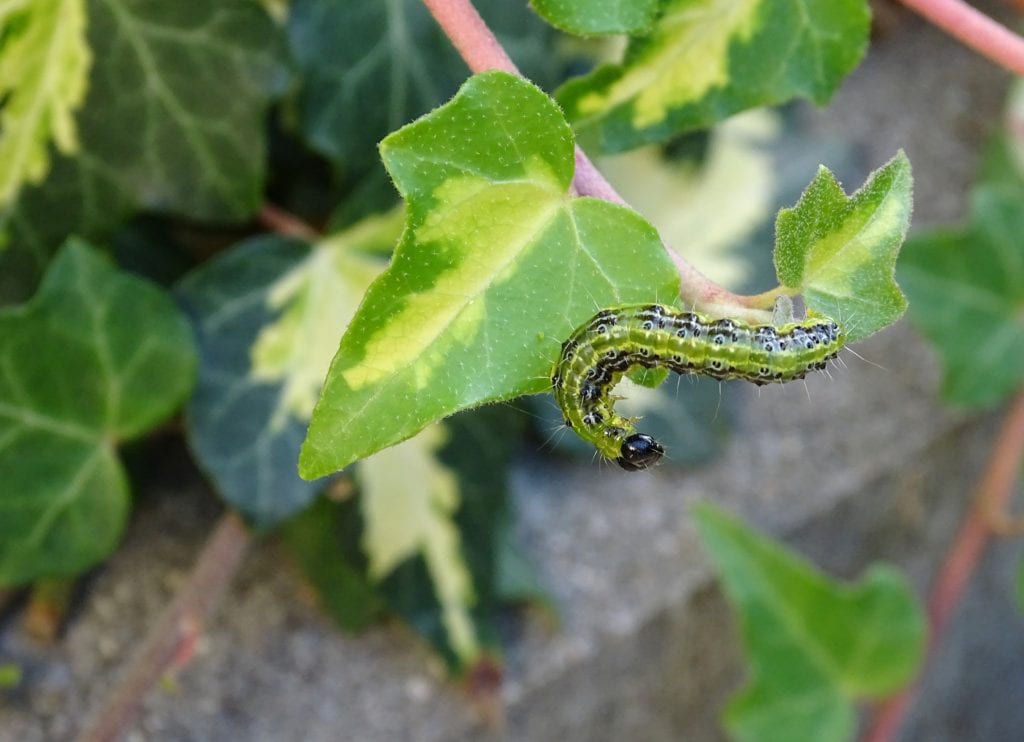If you care for a boxwood in your garden and invest a lot of time in its design, the boxwood borer will probably make you break out in a cold sweat at the mere thought of it. The boxwood borer is a member of the butterfly family and the moth is not a threat in itself.
However, the situation is different with the voracious caterpillar. This caterpillar is known to cause so much damage in no time that the boxwood cannot be saved. The boxwood borer was increasingly reported in the media in the mid-2000s. At that time, it arrived in Europe and began to make its mischief.
Contents
Origin in East Asia
For a long time, gardeners in Europe did not have to fear the boxwood borer. The butterfly was mainly native to East Asia. This includes the following countries as distribution areas:
- Japan
- China
- Korea
- India
- Far East
The boxwood borer spends its lifetime, contrary to what its name would suggest, mainly on other plants. There it settles on the underside of the leaves.
When laying their eggs, however, the females specifically go in search of a box tree. This is hardly attractive for most animals because of the numerous toxins. The larva of the boxwood borer, however, has no problem with this, so that it encounters plenty of food and hardly any competition.
The number of generations per year varies depending on climatic conditions. A temperature of at least 7°C is required for the pupated larvae to develop in the spring.
In warmer China, development occurs relatively early, resulting in up to 5 generations of box elder borer per season. In colder Japan, on the other hand, 2 to 4 generations can be counted on average.
Since the caterpillar’s pattern of damage was very distinctive and natural predators were scarce, the boxwood borer was considered an invasive species from the beginning. Therefore, the spread of the boxwood borer was strictly monitored and contained if possible.

The tragedy here is that the infestation of the boxwood borer led to the death of the traditional boxwood forest near Grenzach. This has been considered partially defoliated since 2010 and only a small area has remained in its original state.
The boxwood borer is now considered widespread in Europe and has also been reported in Spain as well as Eastern Europe. This means that containment of the invasive species is no longer possible, so that only targeted control can reduce the damage.
Why does the boxwood borer spread explosively?
The boxwood borer is considered a survivor. The boxwood is classified as poisonous and in this way it keeps natural predators away. Pests usually give this plant a wide berth, which is why the boxwood has a certain robustness in the wild.
However, the caterpillars of the boxwood borer are not bothered by the poison. On the contrary, they even seek proximity to the even more poisonous leaves inside the boxwood. There they are protected from predators and can spread unhindered.
Due to the one-sided way of feeding, the larvae store the poison. For birds they are therefore considered inedible and are spat out again immediately after ingestion. Only occasionally do some bird species have no problems with eating the caterpillars. The inedibility leads to a comparatively low number of enemies. Therefore, the caterpillar can spread undisturbed and finds a rich food source in boxwood.
The spread of the boxwood borer
The strong spread of the boxwood borer in Europe is considered a direct consequence of globalization. The invasive species was introduced to Europe in 2006 via the international plant trade. From there, the boxwood borer has spread throughout Europe.
In the meantime, observations have also been reported in Russia as well as Canada. Due to the intensifying trade and the scarcity of predators, the boxwood borer was able to spread far away from its actual home and also feels at home in Europe.

